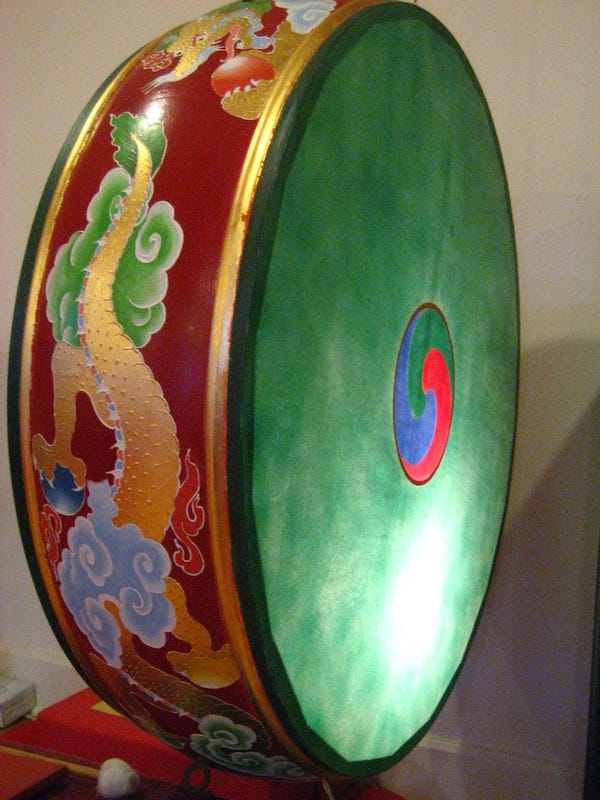
[This post is the second in a series about working with mental afflictions. The first post is “Diaphanous Daffodils.”]
In my first post about emotions, I mentioned how the lens of Buddhist psychology views destructive emotions as mental states (or filters) that obscure reality, preventing us from seeing things as they are, whereas constructive emotions give us a “more correct appreciation of the nature of what one is perceiving.”1 Harmful emotions are referred to as hindrances because these mental states “hinder the development of the mind: they distract and disturb it and they can even possess or obsess it. They prevent the mind from being in a state which is conducive to deeper concentration, to clearer seeing, to the realization of truth.”2
One of my most vivid epiphanies about emotions and the mind was during my first one-day sit at Austin Zen Center in 2001. It was a beginner’s sit that started at 9 AM and ended at 5 PM. Looking back from my vantage as a former monastic that schedule does not seem daunting at all. However, I recall experiencing a tremendous amount of anxiety leading up to the Saturday sit. During the 20 minutes it took me to drive to the center, there was so much anxiety rattling my body and mind that I almost turned around to seek “refuge” in my apartment!
I don’t recall what happened most of the day (except for sitting!). However, the last hour of meditation was a hell realm. A fusillade of mental distress bombarded me. I became possessed by thoughts about the person responsible for striking the bells to begin and end zazen. Although we barely knew each other, I was convinced that he was purposefully NOT striking the bell to end this last period of meditation to spite me. There were so many thoughts-emotions-sensations of feeling persecuted by this person that I alternately wept and raged.
Once the bell rung, it was all I could do not to run out of the zendo and flee to the safety of my car. Instead, I kept my cool and walked quietly out of the meditation hall with everyone else. I didn’t speak to anyone as I put on my socks and shoes and hurried out the door. Only after I was sitting in the driver’s seat did the emotional storm subside, and quite miraculously, a crystal clear thought arose: nothing outside of my mind had caused the drama. A lightness suffused me, and I chuckled. As I turned the key in the ignition, I said to myself, “I need to do this again.”
Although the Buddhist scriptures talk of thousands of negative emotions/mental afflictions, somewhere along the way, they were distilled (thankfully!) into the Five Hindrances:
The desire for sensual pleasure
Ill will, aversion or resistance
Lethargy and drowsiness (or sloth and torpor)
Restlessness and remorse
Corrosive doubt
In his book, Working with the Hindrances, Ajahn Thiradhammo outlines practical ways to unhook from the hindrances. He outlines four modes of awareness that are necessary to feeling some freedom within arising hindrances. First, we have to notice when the hindrances are present. The second level of development is observing what conditions gives rise to them. The third mode of awareness is noticing what causes a particular hindrance to dissipate. The last mode is developing the capacity to prevent (not suppress, though) hindrances from arising in the future.3
During that last hour of the one-day sit, my body-mind was bombarded by ill will, resistance and restlessness. This episode wasn’t the first time I had felt persecuted by the world, by God, by . . . ? However, it was the first time that I was attuned to what was happening because my body was still and the wall was too! Although I was identified with the thoughts and emotion-sensations when they were roiling through me, the epiphany in the car would not have happened had I not just meditated for an entire day.
It was the sun of awareness, the immutable wisdom that runs through all things, that shone through the storm of mental afflictions.
[In the next few posts, I will continue to delve into the hindrances and explore the medicine the Buddha offers to transform afflictive emotions.]
Goleman, Daniel, and the Dalai Lama. Destructive Emotions: How Can We Overcome Them? New York, Bantam, 2004.
Ajahn Thiradhammo. Working with the Five Hindrances. Aruno Publications, 2014.
Ibid.



